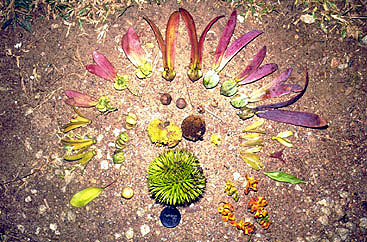| Overview | ||||
| Corner and the durian theory | ||||
| Ashton, Fedorov and evolutionary processes | ||||
| Gentry's hypotheses | ||||
Applications
|
||||
| References and further reading | ||||
| Questions |
These include:
- Allopatric speciation occurring in Pleistocene refugia leading to pockets of forest rich in endemic species which could provide a basis for future speciation. Speciation would occur when changes in climate allowed the development of more extensive tropical forest which would abut the refuge forest. Interbreeding would occur at the margins leading to rapidly increasing speciation in the area.
- A time hypothesis based upon the extreme age of tropical forests. Many forests have evolved relatively undisturbed for a very long time during which natural selection would be occurring. The development of specialised niches in the forest provided space for new species which developed. This process can be seen as a very dynamic form of speciation (Ashton 1969) or can be viewed as an accretion process, which is no different in any other area, but which has been advantaged in the tropics by the long undisturbed time span and more favourable conditions. The accumulation of large numbers of species can thus give the forest a museum status which may be a rather non dynamic feature.

- Explosive sympatric speciation may occur in isolated areas eg high altitude pockets in the Andes, where a mixture of local discontinuities and edaphic factors would provide the potential for great localised radiation.
- Increased incidence of radiation associated with a position close to the equator may lead to greater productivity and therefore more niche specialisation. Alternately greater accumulation of biomass may lead to larger populations less prone to extinction.
- Higher exposure to UV radiation may lead to a higher mutation rate and thus a greater potential for speciation.
The first hypothesis has generally lost favour and is now seen as arising as a result of collection artifacts particularly in South American forests. There is still considerable debate about other hypotheses with a general trend to favour either specialisation associated with sympatric speciation. Such a process may arise through extensive outcrossing,or may be due to increased inbreeding and subsequent isolation. Either process would lead to increased sympatric speciation.
NOW TEST your understanding of the basic principles by answering some questions.